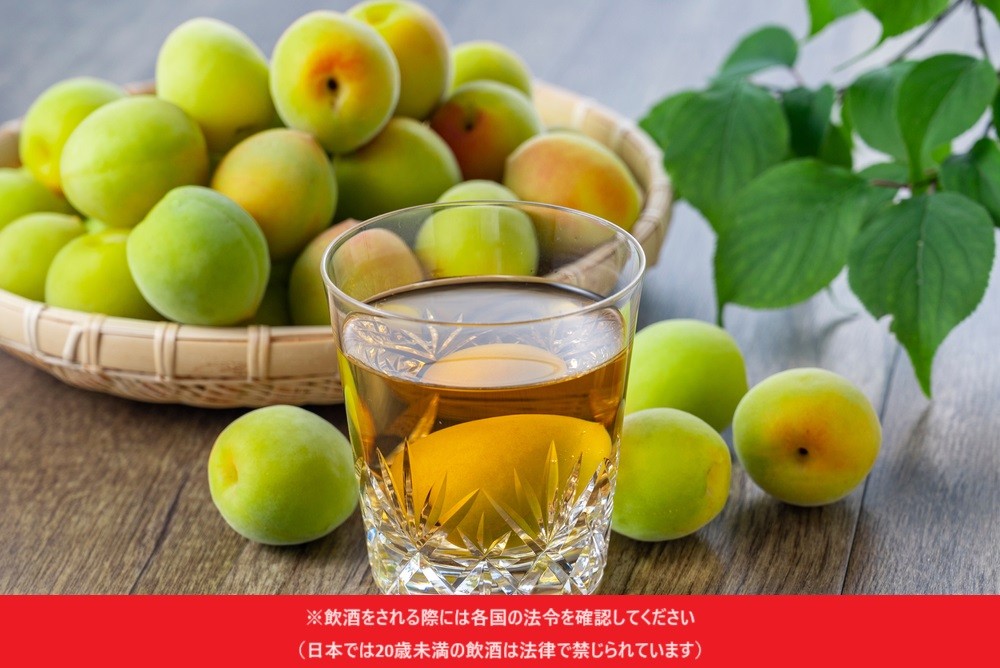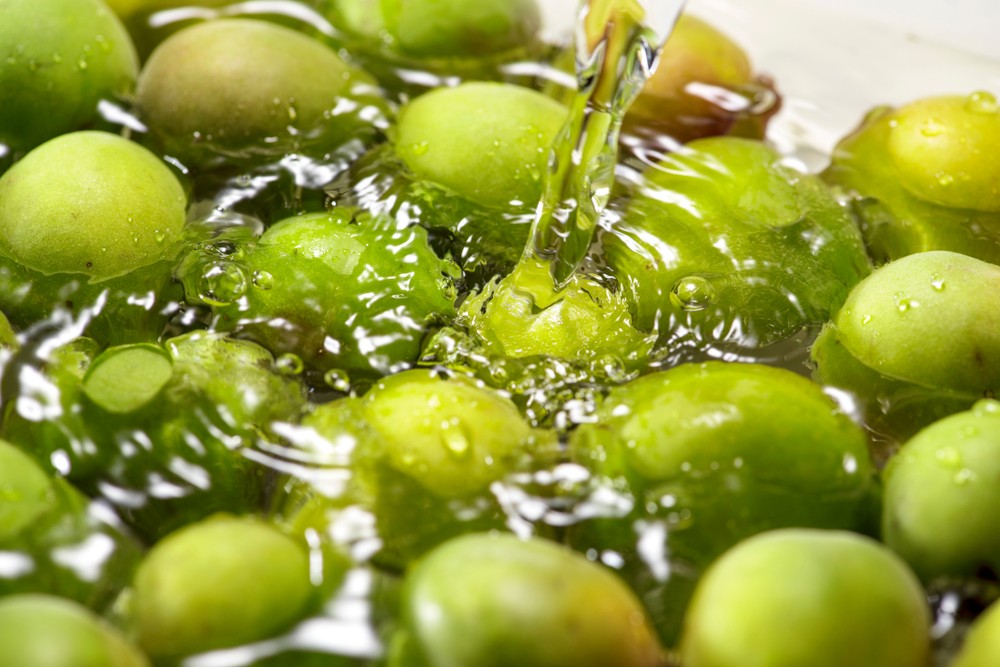Plum wine (known as 梅酒 'Umeshu' in Japanese) is one of the representative fruit wines of Japan, and its balanced taste of acidity and sweetness is loved by a wide range of age groups. Not only in Japan, but plum wine is also gaining popularity overseas in recent years, and the good news is that you can easily make it at home.
In this article, we will introduce the history of plum wine, its benefits, and recommended ways to drink it. We will also teach you how to make plum wine that suits your taste, so if you are a fan of plum wine, please read until the end!
※This article is intended to introduce plum wine and does not promote the sale or consumption of alcohol
※Please check the laws of your country before consuming alcohol
※Drinking alcohol during pregnancy or breastfeeding can have negative effects on the development of the fetus or infant
The most popular fruit wine in Japan! Basic knowledge of plum wine

※Please check the laws of your country when drinking alcohol (In Japan, it is illegal for those under 20 to drink alcohol)
History of Plum Wine
There are no records regarding the origin of plum wine, and it is unclear when it began to be consumed. However, the "Honcho Shokkan," written during the Edo period, introduces the benefits and methods of making plum wine. At that time, sugar was valuable and expensive, so plum wine was considered a luxury item for a limited number of people, not for the common people.
As the Edo period progressed, plum cultivation spread among farmers, and the making of plum wine became popular. However, in 1899, the production of homemade alcohol was completely banned. Despite this, there was a lot of illegal production, and because the law did not match the reality, the Liquor Tax Law was revised in 1962. This allowed for the making of plum wine at home, because you simply mixing the drinks rather than distilling or brewing, making it a more familiar drink.
Benefits of Plum Wine
Plum wine is not only delicious, but it is also said to have various effects on maintaining health.
① Fatigue Recovery: Citric Acid
It plays an important role in energy metabolism. It is said to be useful for recovering from fatigue in daily life and light exercise.
② Blood Flow Improvement: Mumefural
It is said that 'Mumefural', one of the components contained in plum extract, improves blood flow.
(Note: It is said to be a component made in the process of boiling down green plums, and it is unclear how much is contained in the plum wine itself.)
③ Constipation Relief: Picric Acid
Although it is contained in small amounts, it is said to have an effect that activates the movement of the intestines.
④ Antioxidant Action: Plum Polyphenols
It protects the body from oxidation by active oxygen. It is mainly known to be useful for skin health, but it also seems to act on the intestinal environment and is related to health.
⑤ Body Fluid Regulation: Potassium
It has the function of excreting sodium and plays a role in improving swelling due to excess salt and maintaining normal blood pressure.
[A word of advice from a registered dietitian]
I think plum wine is an easy-to-drink alcohol that is loved by people of all ages and genders, but the alcohol content can change depending on how you drink it, and you might end up drinking too much.
It contains several ingredients that are expected to have health benefits, and I think there are benefits to being able to drink it without feeling guilty, but there is a large individual difference in the function of alcohol metabolism in the body, and not only those who get drunk easily, but also those who drink too much need to be careful. It would be nice if you could enjoy plum wine, which you can easily make at home, in the right amount and way for you.
[Profile] Miki Takakura
Registered Dietitian, Certified Sports Nutritionist
After graduating from the Department of Food and Nutrition at Mukogawa Women's University, she worked as a hospital dietitian.
After gaining experience in school meal management, group and individual nutrition guidance, and nutrition management tasks, she is currently providing nutritional support for athletes at Morinaga Confectionery's in-training lab.
From classics to unique ones! Delicious ways to drink
Such plum wine is delicious as is, but if you're not a big drinker or want to enjoy it in a different way, try the following mixes!
- On the rocks: Put a large ice cube in a glass, pour in the plum wine, and it's ready. You can directly taste the original deliciousness of the plum wine.
- With soda: The fizzy sensation provides a pleasant stimulation, perfect for summer.
- Mixed with juice: Since plum wine is a fruit wine, it goes exceptionally well with orange juice or apple juice.
- Mixed with tea: The refreshing aroma and astringency of green tea or jasmine tea can balance the sweetness and sourness of the plum wine.
- Mixed with milk: You can enjoy a creamy and soft flavor.
- Mixed with ginger tea: This is a recommended way to drink on a cold day, as it warms up your chilled body.
The combinations are endless! Select your ingredients carefully and create your own favorite plum wine

The ingredients needed for making plum wine, "plum fruit, alcohol, sweetener", come in many varieties and can be freely combined. Why not understand the characteristics of each and arrange them to your liking?
Types and characteristics of plums often used in plum wine
| Main production area | Harvest time | Features | |
| Nanko Plum | Wakayama Prefecture | Green plum: Early June | Large, thin-skinned, small seeds, |
| Kojo Plum | Wakayama Prefecture | Late May to early June | Known as the Blue Diamond, |
| Shira Kaga Plum | Gunma Prefecture | Early to mid-June | Large and well-shaped, with a strong acidity |
| Uguisu Plum | Tokushima Prefecture | Late May to early June | Hard skin with a crunchy texture, and a strong aroma |
| Bungo Plum | Aomori Prefecture | Late June to early August | Large with thick flesh, and low acidity |
Types of alcohol commonly used in plum wine and their characteristics
| Alcohol content | Ingredients | Characteristics | |
| White Liquor | 35 degrees | Molasses | Tasteless and odorless, it enhances the flavor of the ingredients |
| Whiskey | Around 40 degrees | Grains (barley, rye, corn, etc.) | The taste and aroma vary depending on the brand, |
| Vodka | About 40 degrees | Grains (wheat, barley, corn, etc.) | A clean taste with no off-flavors |
| Brandy | About 37 to 50 degrees | Fruits (white grapes, apples, etc.) | Rich aroma and sweetness, mellow richness |
| Sake | About 15 degrees | Rice, rice malt | You can feel the sweetness of rice |
Types and characteristics of sweeteners often used in plum wine
| Type | Raw material | Characteristic | |
| Rock sugar | Refined sugar | Sugarcane, beet | High purity, slow to dissolve |
| Brown sugar | Unrefined sugar | Sugarcane | Has a unique flavor and richness, such as bitterness and astringency |
| Granulated sugar | Refined sugar | Sugarcane, beet | No peculiar taste and elegant sweetness |
| Beet sugar | Unrefined sugar | Beet | Low GI, natural and mellow sweetness |
What are the necessary ingredients and steps? Explaining how to make it in 5 steps

What You'll Need
Making plum wine is quite simple. As long as you have the basic ingredients and tools, you can easily make it at home!
- Green plums (1kg)
- Alcohol (1.8L)
- Sweetener (700g~1kg)
- Bottle (5L)
- Bamboo skewer
Procedure
Once you have prepared the ingredients, follow the steps below to make your own plum wine.
① Disinfect and dry the storage container
② Alternate layers of prepared plums and sweetener
③ Pour in the alcohol
④ Cover and store in a cool, dark place
⑤ Allow the plum wine to mature and remove the plums
When to Drink
It takes at least three months for the plum wine to be drinkable. However, when wrinkles appear on the plum and the color of the plum wine changes from transparent to amber, it's a sign that it's ready.
When the extract of the plum starts to come out, you can enjoy a refreshing taste. However, the flavor of the alcohol still remains, so if you're concerned, you might find it more delicious to drink after about half a year. If you care about the flavor, richness, and smoothness of the plum, try maturing it slowly over more than half a year.
Points to note when making plum wine

Preparing the Plums Carefully
The preparation of the plums is an important process for making plum wine, so you should never cut corners. In order to make delicious plum wine, let's prepare according to the following steps.
①Washing: Remove dirt with running water without using detergent
②Removing harshness: Soak in water for about 1 to 2 hours (no need to remove harshness for ripe yellow plums)
③Drying: Dry naturally and finally wipe off the moisture with kitchen paper or a towel
④Removing the stem: Carefully remove the stem using a bamboo skewer
Thorough Disinfection
If you neglect to disinfect the container, mold may grow during maturation, or the flavor of the plum wine may deteriorate. Boiling disinfection with hot water (for about 5 to 10 minutes) is the most reliable method to prevent the growth of mold and bacteria, but if it is difficult to carry out because the bottle is large, it is OK to wipe it with disinfectant ethanol.
While alcohol such as white liquor and shochu has the effect of suppressing the growth of bacteria, please note that it cannot be used as a substitute for disinfection.
It can be illegal! What are the rules that must be absolutely followed?
Because the taxes on alcohol are a valuable source of revenue for the country, production is strictly regulated. Homemade plum wine is also subject to these regulations, so when making plum wine, be sure to follow the precautions below to avoid violating the liquor tax law.
- Always choose a base alcohol that is at least 20 degrees and has already been taxed
- Do not mix in rice, wheat, millet, corn, grapes, amino acids, vitamins, etc.
- Selling or transferring is not allowed (for personal consumption - only for the person and cohabiting or relatives)
※Laws may vary by country or region, so we recommend checking what is legal under your country's laws. Some countries may outright ban homemade brew even for personal consumption.



Comments